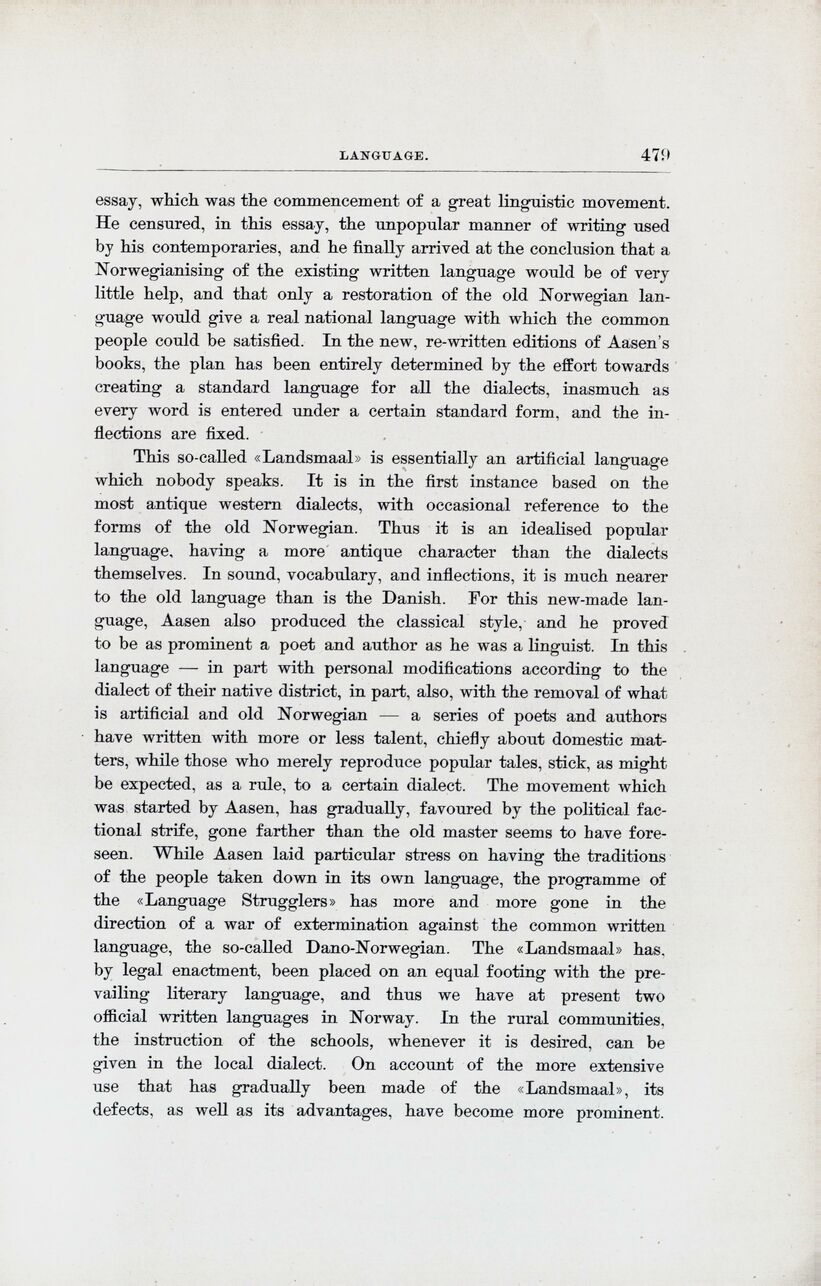
Full resolution (JPEG) - On this page / på denna sida - Language, by Hj. Falk

<< prev. page << föreg. sida << >> nästa sida >> next page >>
Below is the raw OCR text
from the above scanned image.
Do you see an error? Proofread the page now!
Här nedan syns maskintolkade texten från faksimilbilden ovan.
Ser du något fel? Korrekturläs sidan nu!
This page has been proofread at least once.
(diff)
(history)
Denna sida har korrekturlästs minst en gång.
(skillnad)
(historik)
essay, which was the commencement of a great linguistic movement.
He censured, in this essay, the unpopular manner of writing used
by his contemporaries, and he finally arrived at the conclusion that a
Norwegianising of the existing written language would be of very
little help, and that only a restoration of the old Norwegian
language would give a real national language with which the common
people could be satisfied. In the new, re-written editions of Aasen’s
books, the plan has been entirely determined by the effort towards
creating a standard language for all the dialects, inasmuch as
every word is entered under a certain standard form, and the
inflections are fixed.
This so-called «Landsmaal» is essentially an artificial language
which nobody speaks. It is in the first instance based on the
most antique western dialects, with occasional reference to the
forms of the old Norwegian. Thus it is an idealised popular
language, having a more antique character than the dialects
themselves. In sound, vocabulary, and inflections, it is much nearer
to the old language than is the Danish. For this new-made
language, Aasen also produced the classical style, and he proved
to be as prominent a poet and author as he was a linguist. In this
language — in part with personal modifications according to the
dialect of their native district, in part, also, with the removal of what
is artificial and old Norwegian — a series of poets and authors
have written with more or less talent, chiefly about domestic
matters, while those who merely reproduce popular tides, stick, as might
be expected, as a ride, to a certain dialect. The movement which
was started by Aasen, has gradually, favoured by the political
factional strife, gone farther than the old master seems to have
foreseen. While Aasen laid particular stress on having the traditions
of the people taken down in its own language, the programme of
the «Language Strugglers» has more and more gone in the
direction of a war of extermination against the common written
language, the so-called Dano-Norwegian. The «Landsmaal» has.
by legal enactment, been placed on an equal footing with the
prevailing literary language, and thus we have at present two
official written languages in Norway. In the rural communities,
the instruction of the schools, whenever it is desired, can be
given in the local dialect. On account of the more extensive
use that has gradually been made of the «Landsmaal», its
defects, as well as its advantages, have become more prominent.
<< prev. page << föreg. sida << >> nästa sida >> next page >>